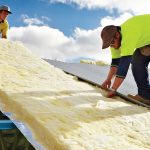Insulating your home is a crucial step in improving energy efficiency, reducing utility bills, and creating a comfortable living environment. Many homeowners wonder if they can tackle this task themselves. In this blog post, we will explore the question, "Can I insulate my own house?" We will provide you with a comprehensive guide that covers various aspects of DIY house insulation, ensuring that you have the knowledge and confidence to undertake this project successfully.
- Understanding the Benefits of House Insulation:
Before delving into the process of insulating your home, it's essential to grasp the benefits it offers. Insulation helps regulate indoor temperature, reduces energy consumption, minimizes noise transmission, and enhances overall comfort. By insulating your house, you can create a more sustainable and cost-effective living space. - Assessing Your Home's Insulation Needs:
To determine whether you can insulate your own house, you must first assess its insulation needs. Start by conducting a thorough inspection of your home's current insulation, identifying any gaps, leaks, or areas of improvement. Consider factors such as climate, local building codes, and the age of your house to determine the appropriate insulation materials and techniques. - Choosing the Right Insulation Materials:
Selecting the right insulation materials is crucial for achieving optimal results. This section will discuss various types of insulation, including fiberglass, cellulose, spray foam, and rigid foam. We will delve into their pros and cons, R-value (a measure of insulation effectiveness), and suitability for different areas of your home. By understanding the characteristics of each material, you can make an informed decision based on your specific requirements. - DIY Insulation Techniques:
Now that you have identified your home's insulation needs and chosen the appropriate materials, it's time to explore DIY insulation techniques. We will provide step-by-step instructions for insulating different areas of your house, such as walls, attics, basements, and crawl spaces. Additionally, we will discuss safety precautions, tools required, and common challenges you may encounter during the process. - Ensuring Energy Efficiency:
Insulating your home goes hand in hand with improving energy efficiency. In this section, we will explore additional measures you can take to maximize energy savings, such as sealing air leaks, installing weatherstripping, and upgrading windows and doors. By implementing these strategies alongside insulation, you can create a more energy-efficient home. - Seeking Professional Assistance:
While DIY insulation is feasible for many homeowners, some situations may require professional assistance. We will discuss scenarios where it's advisable to consult an insulation contractor, such as complex structural issues, specialized insulation needs, or time constraints. Knowing when to seek professional help ensures that your insulation project is executed safely and effectively.
Conclusion:
In conclusion, the answer to the question, "Can I insulate my own house?" is a resounding yes. With the right knowledge, materials, and techniques, you can successfully insulate your home, improving energy efficiency and comfort. This comprehensive guide has provided you with the necessary information to embark on your DIY insulation journey. Remember to prioritize safety, follow local building codes, and seek professional assistance when needed. Start insulating your home today and enjoy the long-term benefits it brings.



Average Rating